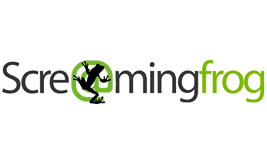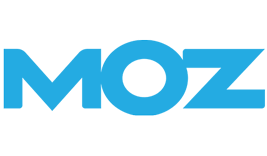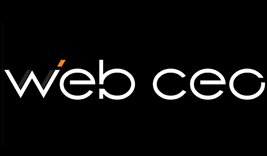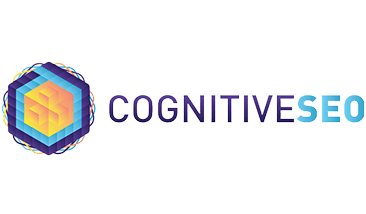SEO OPTIMIZATION
SEO is short for Search Engine Optimization, and is one of the most important online promotion processes. Basically, SEO puts you on the first page of Google.
If you want to be on the top positions in searches, request a personalized offer for SEO promotion services by filling out the form below!
Let’s take a closer look at what SEO actually does and the reasons why you need SEO optimization for your business website, as well as what an effective SEO campaign looks like!
When we talk about online promotion, we are talking about SEO services, among other things, an important process in any marketing strategy. Below we explain what SEO is and why you need it.


HOW DO SEARCH ENGINES WORK?
When someone searches for a specific topic on Google, search engines immediately return to the user the most relevant sites that talk about that topic. If we don’t take into account the paid ads, which appear in the sponsored links section, the first results that appear are the sites that have increased most in search engines rankings.
Sites with a leading position in the SERP (Search Engine Results Page) have gotten there thanks to proper SEO optimization. Thus, these sites enjoy excellent visibility due to an organic growth that complies with Google’s policies.
Now do you understand why it’s important to be among the top results? Not to mention that most people search for the services and products they need online and about 90% of them choose one or more links from the first results page. It’s very rare for them to reach the second or third page.
Therefore, in order to be accessed by the users you are interested in, you must not only be visible, but also positioned where you need to be – among the leaders. And you don’t get here anyway, but through a professional SEO optimization strategy.

SEO = Search Engine Optimization
i.e. Search Engine Optimization
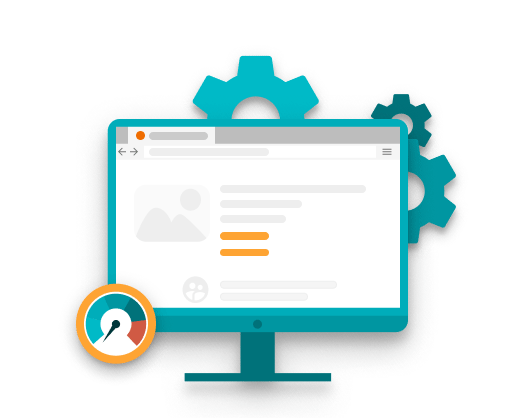
What does it mean that a site is optimize for search engines?
The biggest challenge after creating a site or a new landing page is attracting relevant traffic to ensure a sufficient number of visitors every day to be able to generate the desired volume of sales or conversions. The good news is that you can attract traffic to a newly created site from the beginning, through a series of techniques and tools that allow you to interact with targeted users.
But let’s explain first what we mean when we say targeted users. The goal of any site is, of course, to be visible and attract traffic. The more visitors there are to the site, the greater the chances that the services or products available there will be requested.
Targeted traffic or organic traffic is obtained by the appearance of the site in the search results that users perform in search engines, usually in Google. This means that in order to appear in these searches, the site must contain the search terms. These are also named keywords or keyword phrases, the real main characters of SEO strategy.
If a site is correctly optimized for certain keywords, it will appear when someone searches for those terms. Thus SEO helps to effectively target users through relevant searches.

What is the main purpose of search engines optimization?
Here is a conclusive example! If you have a site that sells shoes, you should obviously be visited by people looking for shoes. It’s in vain that you have the coolest shoes in the universe, if the people who come to your site are looking for something else. You need to choose keywords that are relevant to your business. “Women’s shoes” could be a relevant keyword.
If you have a well-developed SEO strategy on this keyword, when someone searches on Google for “women’s shoes”, your site will appear in searches, that person will come in to visit your site and , why not, will buy your products. The person in question is targeted traffic.
If in the case of women’s shoes there is a high search interest, there are also subcategories in each field for which the search interest is low or doesn’t exist at all. The newly launched products fall into this category. In vain you optimize the page for a product that the world does not know about or is not looking for. Before you start doing SEO, you need to pay attention to this aspect as well.
Our suggestion is to focus on strong, high-search keywords that could put you on the online map. The more traffic you have, the higher your authority and, unquestionably, your notoriety.

SEO vs. PPC optimization
At first glance, SEO and PPC are easy to confuse because both methods help websites appear in search engine results. But their approaches are different.
Google Ads, for example, is suitable for getting quick results, and depends on a Google Ads account and an advertising budget. The promoted site is displayed on the first page of searches as soon as a campaign is started, while search engine optimisation returns visible results after a longer period.
Paid ads are the first 4 and last 3 results on the first page and are recognized by the word “ad” next to them. When a user clicks on a paid ad, the site is charged. A Google Ads campaign is dependent on an advertising budget. When this runs out, the campaign stops and the site disappears from the paid results..
On the other hand, SEO is a process of improving a website’s visibility in search engine results organically. This type of online promotion does not depend on a platform, as is the case with paid ads, but includes both sets of actions carried out on-page, i.e. on the site whose visibility is being sought, and off-page strategies aimed at obtaining links to the promoted site.
And although they can provide satisfactory results if used individually, when used together, the two promotion techniques, SEO and PPC, generate more traffic to the targeted site and significantly increase sales and profits for the business being promoted.
A PPC agency! know the specifics of proper setup and optimization for an SEO or Google Ads campaign to be successful and make you visible online.
As we talked about earlier, before you start doing SEO, you need to know a few important things for your business, from target audience, to search interest, overall marketing goals and competition, just to name a few.
Why? Because absolutely every element of your site influences in one way or another the traffic that reaches the site.
You can have a visually impeccable site that is exactly what your audience wants, but if its elements are not properly indexed by search engines, the chances of it reaching the audience decrease significantly. We are talking here about keywords, links, images, upload speed, everything. So how do you use your strengths to create an SEO optimization strategy that works?
It all starts with understanding your traffic – what people are looking for online, how you can target them, what words best match what you have to offer. Based on this analysis, you will need to choose the most appropriate keywords around which to build your content and message, so that you can reach your audience.
Here are some tools that will help you find the keywords relevant to your business.



When you choose to work with an SEO agency, the research part consists of a complete audit of your site, starting from the understanding of your business and objectives, the audience and your existing marketing strategy. This is the only way to find the best methods to implement in your SEO optimization campaign.
This stage is essential because all the elements of your site – content, architecture, descriptions, etc. – are systematized and indexed by search engines and understanding them serves to establish the stages of work on the site.
On-page SEO is only one part of online promotion and consists of changes made to the code of a web page in order to be optimized and indexed correctly in search engines. Because search engines perform two essential functions – crawling and building a real-time database and generating a list of relevant answers for users – it’s important to align with the indexing policies in order to be displayed.
The main assumption is that a page will appear in the search engine results because the site has a page that mentions the search terms. Based on the research carried out in the previous stage, the actual optimization of the site begins.
The first rule of on-page optimization is to know what users are looking for when they want to reach the services or products you offer and to make sure that those keywords are found on the page. Therefore, on-page optimization is essentially about choosing the right keywords around which to build your content and making it clear to search engines that your page revolves around those keywords.
There are dozens of tools on the Internet that allow you to measure the keywords density of a page. Here are the tools to use when you want to optimize your on-page website!
Moreover, the content of the site must be edited and modified according to the suggestions for improving and optimizing the way it works, suggestions that emerge from the research.
Also in this on-page optimization stage, special attention will be paid to writing titles and descriptions, mistakes will be eliminated, the structure of URLs and internal links will be optimized, images will be processed and optimized, etc.
Off-page optimization involves the process of link building, that is generating as many quality external links to the optimized site as possible. This process is accomplished through several ways, such as article directory submission and article distribution, collaborating with influencers, reciprocal links through newsletters, blog posts and social media marketing.
The basic premise is simple – the more valuable content a page has, the more foreign sites will naturally link to it. And the more trustworthy that page is/looks, the more likely it will rank higher in search engine results.
However, as with on-page optimization, off-page optimization is all about creating relevant and quality content for your audience, and, being a creative strategy, it doesn’t have a standard recipe. There is no set number of sites that need to talk about you to be considered worthy of a higher position in search engine results. It’s all about strategy and how well you know how to navigate the optimization waters.
So don’t start writing endless articles. You must first understand the link building process.
When we talk about link building we are talking about quality links. Only these increase the overall authority of a site in search engines and help them correlate the relevance of a page with specific keywords, based on those used in an anchor text link.
Anchor text is the visible text within a link that you can click to reach to another site. The anchor text used must be correct, short and relevant and convey useful information about the content of the link. Usually, anchor text is the keyword or expression that underlies the on-page SEO strategy.
And yet, how do you write a link building text? When it comes to off-page optimization, the most appropriate strategy is “calculated” based on the type of business and competition of the site. Thus, you have to decide what type of materials (educational or informational) to use and when, where to publish it, how to link it to social networks in order to increase your notoriety, etc.
Here is a relevant example! If you have recently opened a restaurant in Bucharest, we think it would be wise to start by writing awareness (education) materials that will familiarize the public with your name. Publish them on local sites that are relevant to your business. You can also contact some influencers in the hospitality industry to introduce your restaurant and services, and have them will write about you, mention you in their social media posts and / or become your customers.
The purpose of search engines is to determine the quantity and quality of links that link to other sites, in order to ensure that only pages with quality and reliable text for users will be indexed and will receive a higher rank on the results page, but not those with less credible resources.
SEO is a long-term process. The results implemented today will not be seen tomorrow, so you may be tempted to find simpler and faster solutions to build a massive amount of links that link back to your site, with the goal of ranking higher in search engines. But pay close attention to handling strategies. Google penalizes sites that use these link building practices.
See below the tools you can use to optimize your site off-page.
You can have a visually and technically extremely well designed site, but if it’s not properly indexed by search engines, it remains unvisited and therefore useless for your ultimate purpose. By using SEO techniques, you give it a chance to be visible online and attract visitors. In addition, the better a site is indexed, the better its position in Google will be, which will bring more clicks and visits from interested users.
If done correctly, search engine optimization will help you rank at the top of Google searches.
However, keep in mind that the actual visibility of a site is directly influenced by the keyword positions in Google. So, the better you are indexed for certain keywords, the better your site will be positioned and be more visible, because search engine visibility brings qualified traffic from targeted keywords, and by default interest and leads.
SEO = INDEXING – RANKING – VISIBILITY – TRAFFIC – CONVERSIONS
It’s also important to know that search engine optimization, although an effective marketing tactic, is a long-term tactic. You can’t have an SEO campaign for a few months and then leaving it aside when you get to the desired position with the site.
SEO optimization is a continuous process of planning, on-page optimization, off-page and monitoring. The results do not appear overnight and do not remain intact once you reach to the first page.
For immediate results, the alternative is paid advertising on Google, through the Google Adwords advertising system. Adwords ads means a constant presence on the first page of results. Learn more about AdWords here.
But let’s get back to SEO. In order to maintain your top position in organic results, you need to be vigilant to all fluctuations – to your ever-expanding domain, to frequent search engine updates, to the marketing strategies of the competition and even to the behavior of users that changes from day to day.
Therefore, you need to monitor your activity continuously. Results are monitored using the Google Search Console and Google Analytics. These online applications provide you with important data about the effectiveness of your SEO optimization strategy and the aspects that should be improved. To check your efficiency at every stage of SEO optimization, here are some tools to use!


What is SEO?
SEO is short form for Search Engine Optimization and is one of the most important processes of online promotion. SEO is responsible for indexing sites in search engines to increase their organic traffic.
What does the SEO optimization process involve
SEO means evaluation, strategy, implementation and analysis and is divided into 2 parts: on-page SEO and off-page SEO. These two main stages can be briefly expressed as follows: On-page SEO = Keywords / Off-page SEO = Links.
How long does it take to see the results of SEO optimization?
Usually, the results become visible after 6 months, but SEO is a ongoing process, the optimization does not stop even when the site reaches the first page. Once a top position is achieved, continuity is essential to maintain it.


